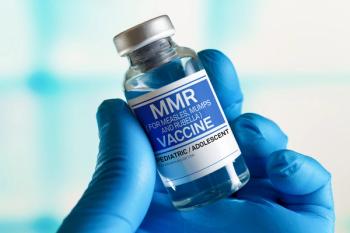
FDA Grants Breakthrough Designation to Treatment for Sickle Cell Disease
Crizanlizumab (SEG101, Novartis) is being developed to prevent painful complications called vaso-occlusive crises in patients with sickle cell disease.
Officials with the FDA have granted Breakthrough Therapy designation to Novartis’ crizanlizumab (SEG101) for the prevention of vaso-occlusive crises (VOCs) in patients of all genotypes with sickle cell disease (SCD), according to a press release.
Patients with SCD face a high economic burden, with annual costs of more than $30,000 for adults with the disease, according to Novartis. SCD can lead to VOCs, which are painful complications caused by clusters of cells that block or reduce blood flow.
“Painful sickle cell crises matter because they can disrupt patients’ lives, and often require hospital visits and medical attention,” Samit Hirawat, MD, head of Novartis Oncology Global Drug Development, said in a statement. “We look forward to working with the FDA over the coming months toward making crizanlizumab, a therapy that has the potential to prevent sickle cell pain crises, available in the US as soon as possible.”
Crizanlizumab, a monthly infusion, is a P-selectin inhibitor that reduces VOCs by binding to a molecule called P-selectin on the surface of platelets and endothelium in the blood vessels. It has been shown to inhibit interactions between endothelial cells, platelets, red blood cells, sickled red blood cells, and leukocytes.
The designation for crizanlizumab is based on data from the phase 3 SUSTAIN trial, which compared crizanlizumab with a placebo in patients with SCD. Patients in the trial were treated with either crizanlizumab 2.5 mg/kg or 5 mg/kg, or a placebo.
According to the data, crizanlizumab reduced the median annual rate of VOCs leading to health care visits by 45.3% compared with a placebo in patients with or without hydroxyurea therapy. The study also found that crizanlizumab significantly increased the percentage of patients who did not experience any VOCs versus a placebo during treatment.
Adverse events (AEs) that occurred in ≥10% of patients in either crizanlizumab treatment group and at a frequency that was at least twice as high as experienced in the placebo group included arthralgia, diarrhea, pruritus, vomiting, and chest pain. Patients who received crizanlizumab (5 mg/kg) experienced a similar incidence of AEs and serious AEs compared with a placebo. Patients receiving crizanlizumab experienced a low 3% incidence of discontinuations due to AEs.
Novartis anticipates filing a New Drug Application for crizanlizumab in the first half of 2019.
Reference
Novartis investigational therapy crizanlizumab (SEG101) receives FDA Breakthrough Therapy designation for the prevention of vaso-occlusive crises in sickle cell disease [news release]. Novartis’ website. https://bit.ly/2Ri0WU2. Accessed January 8, 2019.
Newsletter
Stay informed on drug updates, treatment guidelines, and pharmacy practice trends—subscribe to Pharmacy Times for weekly clinical insights.














































































































































































































